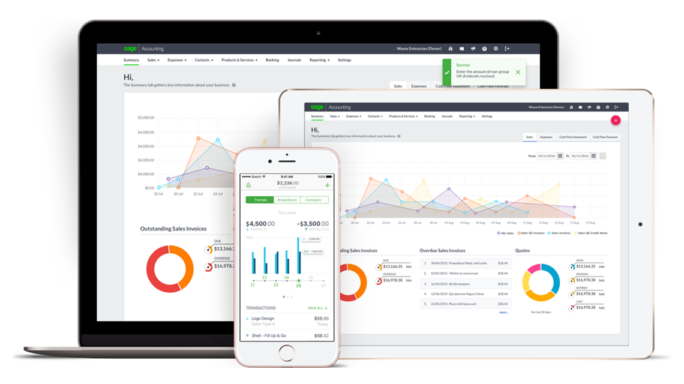Money Matters
A guide to Generally Accepted Accounting Principles (GAAP)
Explore GAAP standards, compliance, and principles with our guide. Navigate financial integrity for business success with actionable insights and updates.

In the vast ocean of financial reporting, navigating through the waves of regulations can be daunting.
Yet, understanding and implementing Generally Accepted Accounting Principles (GAAP) is like setting the sails of your business ship right. It ensures smooth sailing when it comes to financial scrutiny and building trust with stakeholders.
Think of GAAP like a trusty map.
These principles are all about making sure your financial info is clear, consistent, and easy to compare, no matter where your business is in the US.
It’s like having a secret recipe that makes sure all businesses speak the same financial language, making life easier for everyone involved.
In this article, we take a look at this financial framework, uncovering not just the ‘what’ and ‘how’ but also shedding light on why it’s important for businesses big and small.
In this article we’ll explore:
What is GAAP and why does it matter?
The principles of GAAP: A deeper dive
GAAP standards: Navigating the complexities
Becoming GAAP compliant: A step-by-step guide
GAAP vs IFRS: Understanding the differences
Technology’s role in GAAP compliance
What is GAAP and why does it matter?
GAAP refers to a common set of accounting principles, standards, and procedures that companies must follow when they compile their financial statements.
It’s a living framework, shaped over the years by the Financial Accounting Standards Board (FASB). FASB reports financial information on a consistent and transparent basis.
This consistency not only helps investors and creditors make better-informed decisions but also lends credibility and reliability to the financial statements of businesses.
Being GAAP compliant is a testament to a business’s commitment to transparency and accountability.
It opens doors to financing opportunities, bolsters investor confidence, and ensures compliance with regulatory requirements.
For example, GAAP requires businesses to follow a consistent methodology for recording financial transactions and presenting financial statements.
GAAP processes and reports all financial information in a uniform way across industries. This makes it easier for investors, creditors, and regulatory bodies to understand and compare financial statements across different periods and companies.
Think of it as everyone using the same map and compass on a treasure hunt.
When this happens, everyone’s findings can be reliably compared, ensuring no one’s led astray by peculiar or misleading financial representations.
By adhering to GAAP, businesses not only demonstrate their commitment to financial integrity, they also build a foundation of trust with all their stakeholders, underpinning their financial reports’ credibility and reliability.
Read more: What are Generally Accepted Accounting Principles (GAAP)?
The principles of GAAP: A deeper dive
GAAP dictates the key principles that guide how to record and report financial information.
Below, we cover some of the most common GAAP principles and a brief explanation of each.
They form the bedrock of GAAP, ensuring the financial statements of companies are reliable, comparable, and transparent, thereby facilitating better decision-making by investors, creditors, and other stakeholders.
1. Historical cost
This principle states that companies should record assets at their cost at the time of acquisition.
It provides a clear basis for valuing capital assets, ensuring financial statements are based on verifiable and objective data.
2. Revenue recognition
According to this principle, revenue is recognized when it is earned and realizable, regardless of when the cash is received.
This helps in accurately depicting the company’s financial performance over a period.
3. Matching
Expenses must match with the revenue generated by those expenses.
For example, if a manufacturer pays for materials ahead of time to get a bulk discount, those materials can’t be expensed until the time they were used for creating sellable products.
This ensures that financial statements reflect the actual costs of generating revenue during a specific period, providing a more accurate picture of profitability.
4. Full disclosure
The full disclosure of all significant information in financial statements is fundamental. This ensures that stakeholders have a comprehensive view of the company’s financial health and operations
5. Objectivity
This principle emphasizes that financial statements should be based on objective evidence.
Financial data should be free from bias and verifiable by an independent observer, lending credibility to the financial reports.
6. Consistency
Once a business chooses a specific method of reporting or accounting, it should stick with it from one period to the next, unless a change is warranted. This consistency allows for the accurate comparison of financial information over time.
7. Prudence
Also known as the conservatism principle.
Prudence dictates that accounting for a business is completed with caution. Potential expenses and liabilities are recognized as soon as possible, but revenues only when they are assured.
This prevents the overestimation of financial position.
8. Going concern
This principle assumes that a company will continue to operate indefinitely, unless there is evidence to the contrary.
It justifies the deferment of depreciation and amortization over the expected useful life of fixed assets.
Automate your small business accounting
Easy to setup. Easy to use.
Save time, improve cash flow, and get paid faster with Sage Accounting.

GAAP standards: Navigating the complexities
The FASB continually updates GAAP standards to address new accounting issues and refine existing practices.
Recent updates have addressed areas such as leasing (Topic 842), revenue recognition, and financial instruments.
These standards ensure that complex financial transactions are accounted for in a manner that reflects their true economic essence, providing stakeholders with clear and relevant financial information.
For example, before these changes, leases were classified as either operating or capital leases,. This impacts how they are recorded on the balance sheet and income statement.
However, the new standard requires lessees to recognize nearly all leases on the balance sheet as a right-of-use asset and a corresponding lease liability.
This change aims to provide greater transparency about the assets being used by a company and its future lease obligations.
Here’s how the impact of this update might look:
- Before Topic 842: A company leases a piece of equipment under an operating lease. The lease payments are considered operating expenses, and the lease payments are shown on the income statement, not the balance sheet.
- After Topic 842: The same company, now under the new standard, must record the equipment lease on the balance sheet, showing both the value of the right to use the asset (right-of-use asset) and the obligation to make lease payments (lease liability). This approach provides a more comprehensive view of the company’s financial commitments and assets.
Recording operating leases on the balance sheet reflects the economic reality that using a leased asset is a form of financing.
It acknowledges that leasing results in an obligation to make future payments, similar to other forms of debt.
This approach aligns the accounting treatment of leases with their economic substance, providing a more accurate financial picture of a company’s leverage and asset usage.
This example highlights how GAAP standards evolve to reflect more accurately the financial situation of businesses, thereby aiding stakeholders in making better-informed decisions.
By understanding and applying these updates, companies ensure their financial reporting meets current standards, enhancing credibility and comparability.
Becoming GAAP compliant: A step-by-step guide
Achieving GAAP compliance involves a thorough review and adaptation of your accounting practices.
It starts with understanding the specific GAAP standards applicable to your business and conducting an internal audit of your financial reporting processes.
Implementing GAAP-compliant practices may require adjustments to how you record and report financial transactions.
Below are steps your business might take in order to become GAAP compliant.
1. Asses current accounting practices
Start by identifying which GAAP standards are relevant to your business operations. This could vary based on industry, size, and the nature of transactions your business engages in.
Perform a detailed review of your current accounting practices, financial statements, and reporting processes.
This audit aims to pinpoint areas that do not align with GAAP requirements.
2. Compare your current practices to GAAP
Comparing your current practices against GAAP standards will help to identify discrepancies. This involves a detailed analysis of your accounting methods, documentation practices, and financial reporting formats.
Develop a tailored action plan that outlines the steps required to fix any discrepancies.
This plan should include specific tasks, responsible parties, timelines, and resources needed.
3. Implement GAAP-compliant practices
Make necessary adjustments to how financial transactions are recorded. This might involve changing how revenue recognition, leasing arrangements, and inventory valuations are handled, among others.
Revise your financial reporting processes to ensure they comply with GAAP standards.
This includes adopting the required financial statement presentations and disclosures.
4. Train accounting department staff
Conduct regular training sessions for your accounting and finance staff to familiarize them with GAAP principles accounting and updates to the standards.
Consider external training resources or professional seminars for comprehensive learning.
Encourage continuous professional development among your team to stay abreast of changes in GAAP standards and best practices.
5. Leverage technology
Implement or upgrade existing accounting software to support GAAP compliance.
Many modern software solutions offer features tailored to GAAP standards, including automated reports and alerts for non-compliance.
Integrate your financial systems so you’re capable of generating accurate, GAAP-compliant financial statements.
This may require IT resources to ensure seamless data flow and reporting.
6. Continue to review
Engage with accounting professionals or consultants who specialize in GAAP compliance. Their expertise can provide critical insights during the transition phase and for complex accounting issues.
Establish a routine for regularly reviewing and updating your accounting practices.
This includes monitoring changes to GAAP standards and assessing their impact on your financial reporting.
7. Update policies
Revise your internal accounting policies and procedures to reflect the changes made for GAAP compliance.
Ensure these documents are accessible to all relevant staff.
Keep detailed records of all financial transactions, supporting documents, and the rationale for significant accounting judgments.
This documentation is vital for audits and ensuring ongoing compliance.
Regular training and professional advice are crucial to staying up to date with US GAAP accounting requirements and ensuring ongoing compliance.
By following these steps, your business can navigate the complexities of GAAP compliance effectively.
Automate your small business accounting
Easy to setup. Easy to use.
Save time, improve cash flow, and get paid faster with Sage Accounting.

GAAP vs IFRS: Understanding the differences
While GAAP is the standard in the US, International Financial Reporting Standards (IFRS) is used in more than 140 countries.
Understanding the differences between GAAP and IFRS is essential for businesses operating internationally.
The two frameworks differ in several areas, including revenue recognition, financial statement presentation, and asset valuation, reflecting different philosophical approaches to some aspects of financial reporting.
A common area where GAAP and IFRS diverge is in the treatment of inventory costs.
Specifically, the difference lies in the use of the Last In, First Out (LIFO) method for inventory valuation.
GAAP allows companies to use the LIFO method, where you sell the most recently produced or purchased items first.
In periods of rising prices, this can lead to lower reported profits (because the cost of goods sold is higher) and, consequently, lower taxes.
IFRS does not permit the use of the LIFO method.
Instead, IFRS encourages the use of either the First In, First Out (FIFO) or the weighted average cost method.
These approaches often result in higher reported income in times of inflation compared to LIFO because older, usually cheaper, costs are matched against current revenues.
This difference can significantly affect the financial statements of companies operating in industries where inventory costs fluctuate substantially.
For companies that operate internationally and report under both GAAP and IFRS, the choice of inventory valuation method under GAAP can lead to discrepancies in reported profits, asset values, and equity between the two sets of financial statements.
Technology’s role in GAAP compliance
In today’s digital age, technology plays a pivotal role in facilitating GAAP compliance.
Accounting software solutions, designed with GAAP principles in mind, can automate many of the complex calculations and reporting requirements, reducing the risk of errors and non-compliance.
Selecting the right technology tools is crucial for maintaining efficient and accurate financial reporting processes.
Final thoughts
GAAP compliance is not just about adhering to a set of accounting rules. It’s about embracing a framework that enhances the credibility and comparability of your financial statements.
By understanding and implementing GAAP standards, businesses can build a foundation of financial integrity that supports long-term success and growth.
The journey to GAAP compliance is ongoing, requiring vigilance, adaptation, and a commitment to financial excellence.
With the right approach and resources, navigating the complexities of GAAP can lead to smoother financial operations and enhanced stakeholder trust.
Navigating the nuances of GAAP may seem daunting, but it’s a crucial step toward establishing your business’s financial credibility.
By taking the time to understand and implement these standards, you’re not just complying with regulations, you’re laying the groundwork for sustainable business growth and success in the competitive business landscape.





Ask the author a question or share your advice